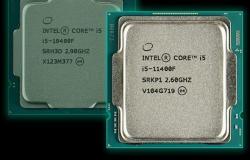The mysterious hiccups of a supermassive black hole are caused by an orbiting small black hole
Big black hole and small black hole. Credit: Jose-Luis Olivares, MIT.
At the center of a galaxy about 800 million years away from us is a supermassive black hole. There would be nothing strange about that in itself. However, this black hole suffered from hiccups. Every 8.5 Earth days, it snapped and spewed cosmic gas. Then she pretended nothing happened.
It was a mystery to scientists. We have not yet observed such hiccups in a supermassive black hole. Dheeraj Pasham (DJ) from the American MIT Kavli Institute for Astrophysics and Space Research led a large international team, which also included Czech experts, who offered as the most likely explanation a second, much smaller black hole that orbits the supermassive black hole and passes through accretion disk of its supermassive counterpart.
Dheeraj Pasham (DJ). Credit: MIT.
This remarkable research changes the traditional view of black hole accretion disks. Scientists usually think of them as relatively uniform disks, made up mostly of gas, that rotate around a black hole. Pasham et al. suggested that accretion discs may be more diverse. They appear to contain black holes or even entire stars.
The hiccuping supermassive black hole was discovered by the ASAS-SN automated telescope network (All Sky Automated Survey for SuperNovae). It consists of 20 robotic telescopes, which are located in various places in the northern and southern hemispheres. The ASAS-SN telescopes automatically scan the entire sky every night and search for supernovae and other transient, i.e. sudden, events. In this case, in December 2020, they detected a supermassive black hole brightening about a thousand times in an otherwise quite calm area of the sky.

A simulation of a hiccuping black hole. Credit: Petra Sukova, Astronomical Institute of the CAS.
Pasham soon found out and, thanks to a lucky combination of circumstances, was able to direct the NICER X-ray telescope to the spot of brightening (Neutron Star Interior Composition Explorer), installed aboard the ISS in orbit. The intense activity of the supermassive black hole in question lasted for about 4 months.
When Pasham analyzed the obtained data, he discovered the aforementioned hiccup with a period of 8.5 days, which is visible in a very narrow region of X-rays. The signal was similar to when a star’s glow is briefly blocked by an orbiting planet. However, no planet or star can block the radiation of the entire galaxy.
Pasham therefore approached Czech theoretical physicists, who proposed that the observed behavior is caused by a smaller black hole orbiting the supermassive black hole perpendicular to its accretion disk, thus passing through it twice during one orbit. As it passes through the disk, matter and radiation erupt, manifesting as the hiccups of a supermassive black hole.
The whole scenario should look like this: in December 2020, we witnessed the ingestion of a third object, probably a nearby star, by a supermassive black hole. This led to the observed tremendous brightening. At the same time, a lot of matter got into the accretion disk, which the smaller black hole then flew through. Researchers estimate that a supermassive black hole has a mass of about 50 million Suns, while a smaller black hole is only about 100 to 10,000 Suns.
Video: How to find zombie stars aka black holes! | Dheeraj Pasham | TEDxDornbirn
Literature
MIT 27/03/2024.
Science Advances online 27/03/2024.
Tags: OSEL .CZ mysterious hiccups supermassive black hole caused orbiting small black hole
-







